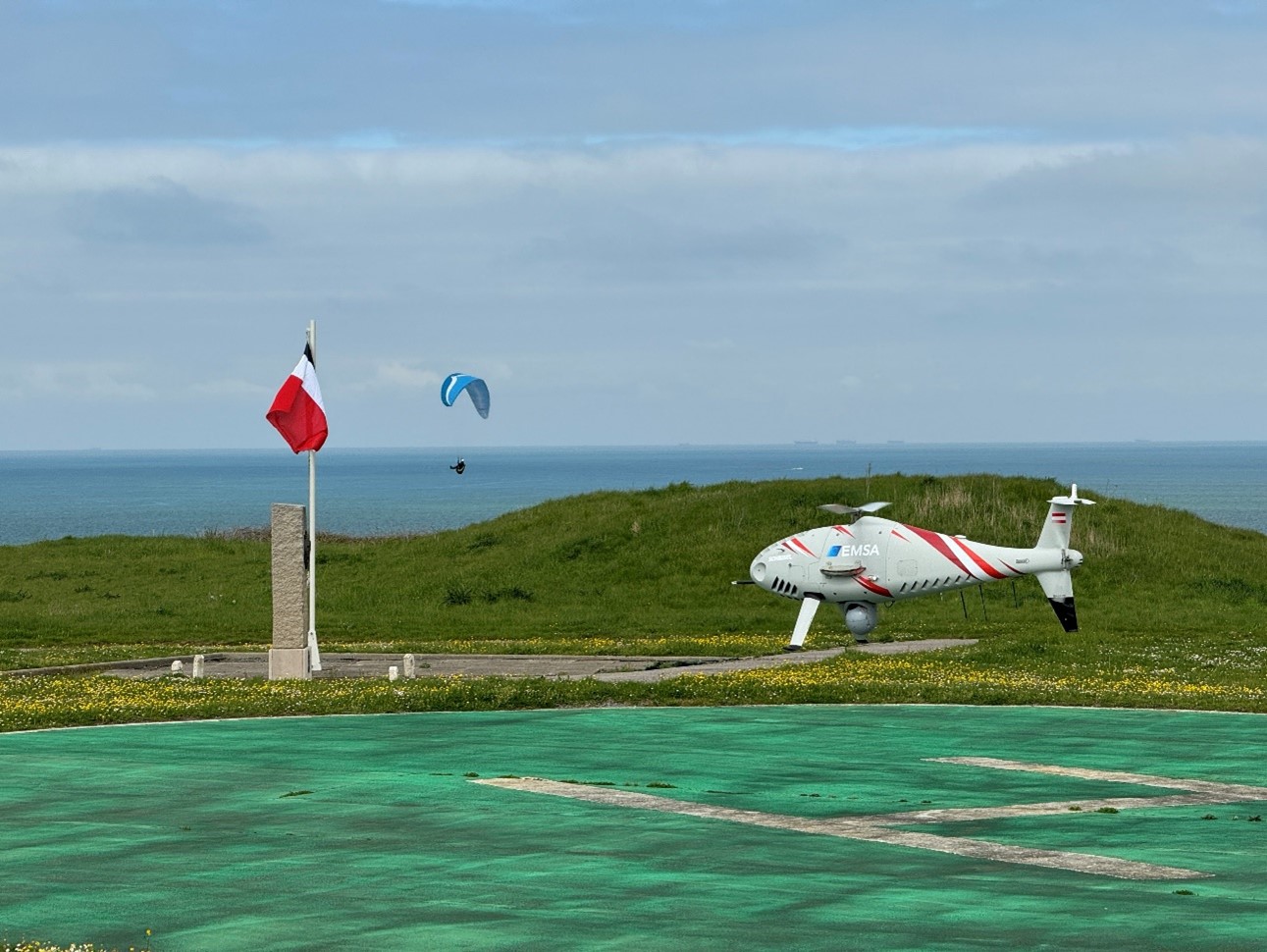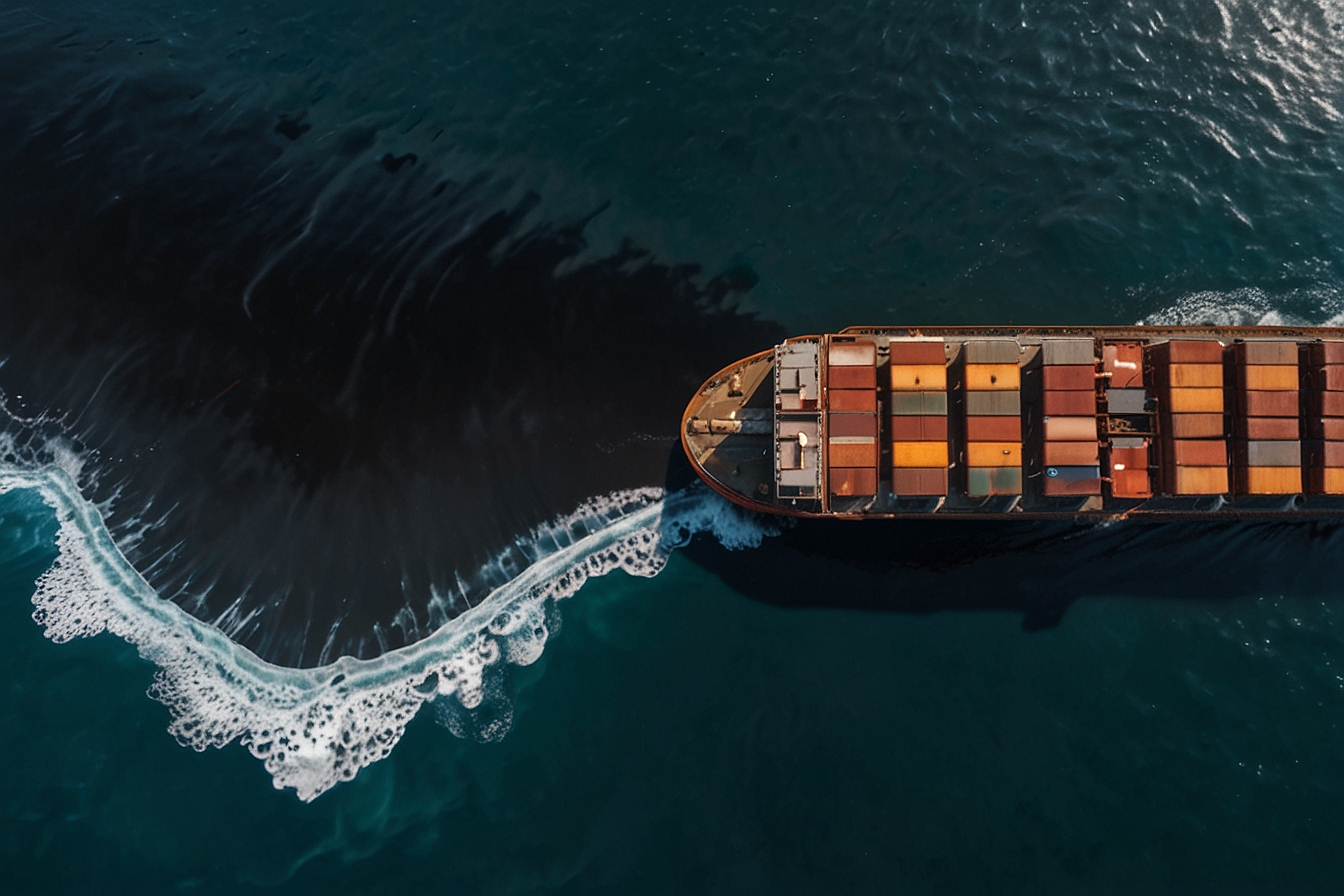Joint operation on security under the European flag
On May 13th, 2024, the official kick-off of a temporary Belgian-French collaboration on the use of drones on the North Sea coast was given in Dunkirk, France. For four months, from May 13 to September 13, 2024, the partners of the Belgian Coast Guard will be able to use two special drones to support their various tasks at sea. This also includes the Management Unit of the Mathematical Model of the North Sea and the Scheldt Estuary (MUMM), scientific service of the Institute of Natural Sciences.

This joint operation by Belgium and France is coordinated by EMSA and EFCA, the European Maritime Safety Agency and the European Fisheries Control Agency, respectively. The project is called MMO (Multipurpose Maritime Operation) La Manche and Southern North Sea and is therefore cross-border.
This summer, even more eyes will be focused on the sea to ensure the safety of our coastal area. In addition, many training courses on maritime safety are organized by international experts.
Nathalie Balcaen – co-chair of the Coast Guard: “This is a great opportunity that we get from EMSA and EFCA. In an initial phase, we want to see how these drones can supplement the resources we already have. How can the devices help with a sea rescue operation or hydrography? Are they the right types or not? We can fully use the material from the summer and then evaluate it. If the results are positive, we will work on the necessary files to purchase drones ourselves.”
Two types of drones will be deployed together with France. A so-called RPAS (Remotely Piloted Aircraft System), a flying drone, and an ROV (Remotely Operated Vehicle), an underwater drone. Various Coast Guard partners will be able to deploy these drones in pre-defined zones of the North Sea.
Use of drones
- The MRCC (Maritime Rescue and Coordination Center) of the Maritime Services and Coastal Agency (MDK) wants to use the RPAS for Search & Rescue. For example, the drone can take images of any ‘anomalies’ at sea such as small boats, drowning people, objects, etc. In the event of a collision between two ships off the coast, the drone can be sent ahead to determine any damage to the ships at an early stage. This makes it possible to intervene even more quickly in the event of a maritime disaster.
- The DG Environment and the MUMM (Management Unit of the Mathematical Model of the North Sea and the Scheldt Estuary) want to use the RPAS to detect environmental pollution. MUMM can also use the drone additionally to verify certain reports about fauna and flora in the North Sea or for measuring emissions from vessels.
- The Agriculture and Sea Fisheries Agency wants to use the RPAS for assignments in the context of fisheries control at sea.
- The Flemish Hydrography Service (Maritime Services and Coastal Agency – MDK) will use the ROV, among other things, to better visualize and identify wrecks on the bottom of the North Sea.
Additional training and exercises
Education and training for the various Coast Guard partners are also provided within the framework of the MMO, in addition to using the technology. The focus here is on even better identification of ships at sea and associated communication. For example, from its headquarters in Lisbon EMSA’s Integrated Maritime Services (IMS) will provide a detailed live image of all vessels on the Channel, one of the busiest sea routes in the world. Special algorithms will be able to track the movements of ships. Together with satellite images, these IMS will provide a lot of data to gain a complete picture of maritime traffic. Belgium and France will also be able to use satellite images from EMSA’s CleanSeaNet Oil Spil Monitoring and Pollution Detection Service.
In the context of the MMO, the DG Environment will also be able to extensively practice an oil response component. On May 14 and 15, the Belgian and French oil response capabilities will be tested during a large-scale exercise. In a fictional scenario, a tanker will lose a substantial amount of oil after a collision off the French coast. France will call on Belgian ships to help combat pollution. Three Belgian ships and a ship from the European agency EMSA will work in formation to remove the oil from the sea.
The Belgian Coast Guard aircraft, operated by the Institute of Natural Sciences and Defense, also takes part in this exercise, and the ecochemical laboratories (group ECOCHEM – Ecosystems Physico-Chemistry) of the Institute of Natural Sciences also play an important role. They receive oil samples via helicopter transport to carry out an oil fingerprinting (process to determine the origin of an oil sample). The results are compared with those of the French, so that the information exchange protocol can also be tested.
Addenda: Aerial images of the simulated oil spill, taken during the exercise of 14-15 May 2024 from the Belgian Coast Guard airplane.


